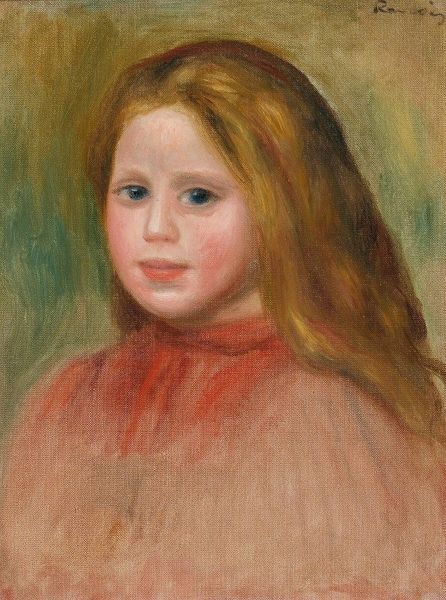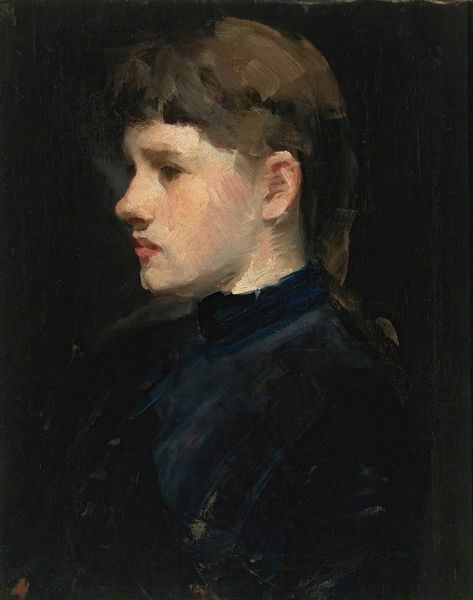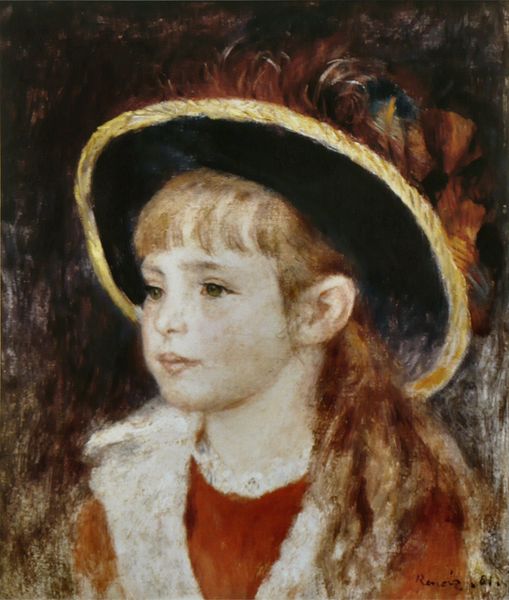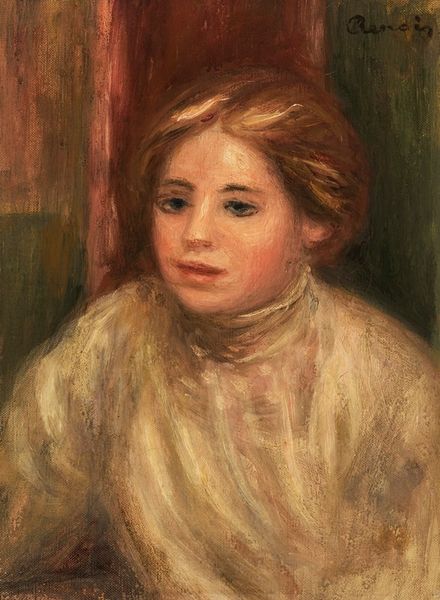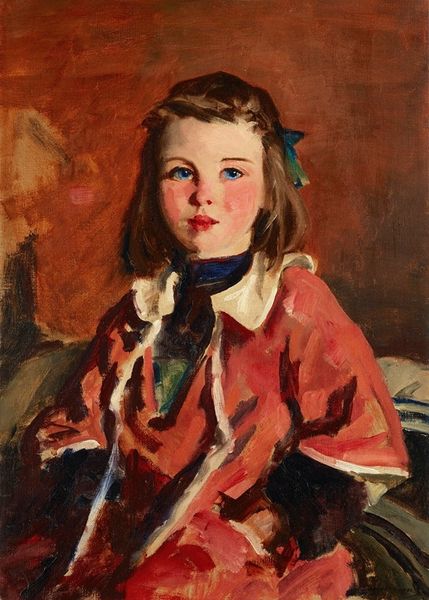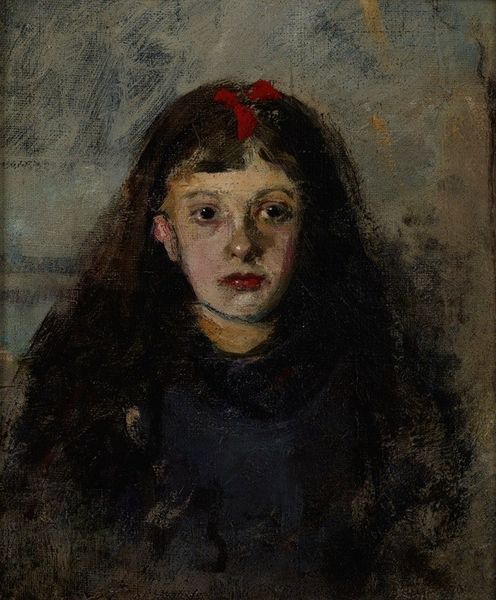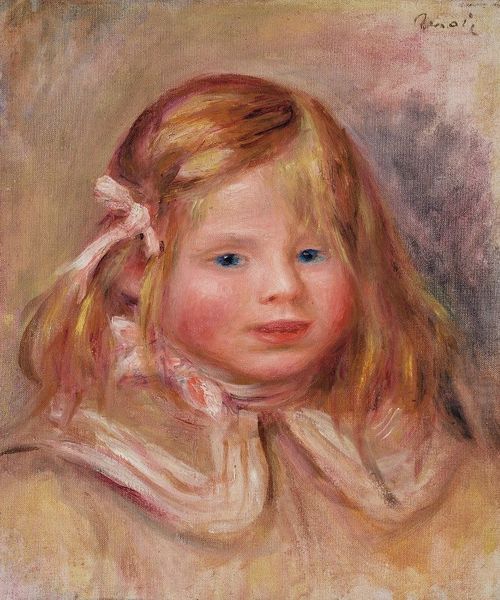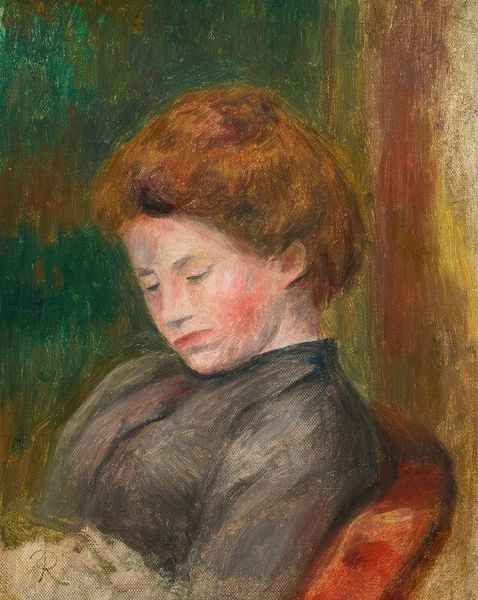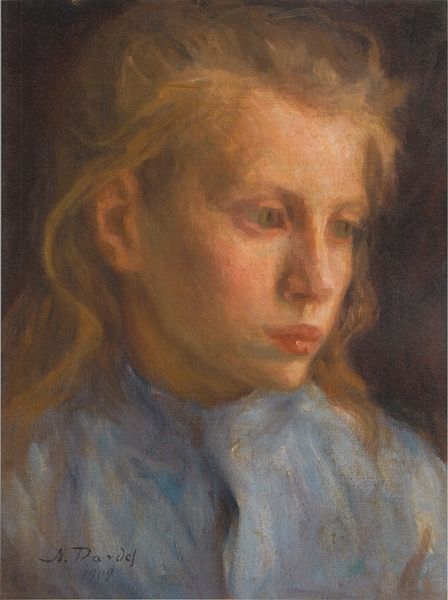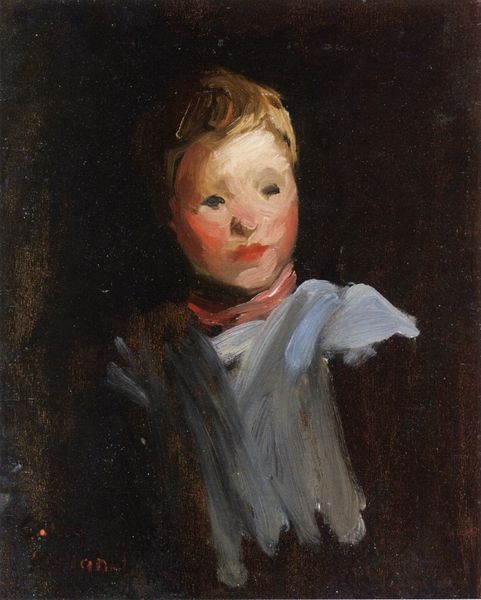
Copyright: Public Domain: Artvee
Editor: Here we have Philip Alexius de László’s "A Blonde Girl with red bow", an oil painting from 1898. I’m struck by its subdued palette, except for that vibrant red bow. It feels both intimate and slightly melancholic. What do you see in this piece? Curator: I see the bow, that striking vermillion knot, as a powerful symbol. It anchors the gaze, but what does it signify? Consider the time – the close of the 19th century. Red, often associated with passion and revolution, appears here domesticated, confined to a child's adornment. Does this represent a societal taming of such forces? Editor: That’s a compelling thought. I hadn't considered the historical context. Is it a comment on the expectations placed upon young women at the time? Curator: Precisely. The girl's averted gaze adds another layer. Where does she look? Away from us, inward perhaps. The red bow then becomes a marker, not of rebellion, but of potential constrained. László gives us, in a small canvas, a potent symbol of youthful spirit negotiating social confines. Don’t you find her expression evokes more than simple childhood innocence? Editor: I do now. It’s like the bow is a beautiful promise, but her eyes hint at something more complex. It almost feels like the beginning of a story left untold. Curator: Stories often reside within symbols. And those symbols evolve over time, carrying the weight of history, psychology, and the human experience. It’s quite moving, isn't it? Editor: It really is. I'll definitely look at portraits differently from now on. Thank you.
Comments
No comments
Be the first to comment and join the conversation on the ultimate creative platform.
